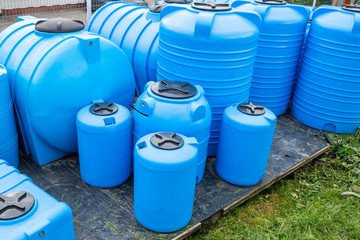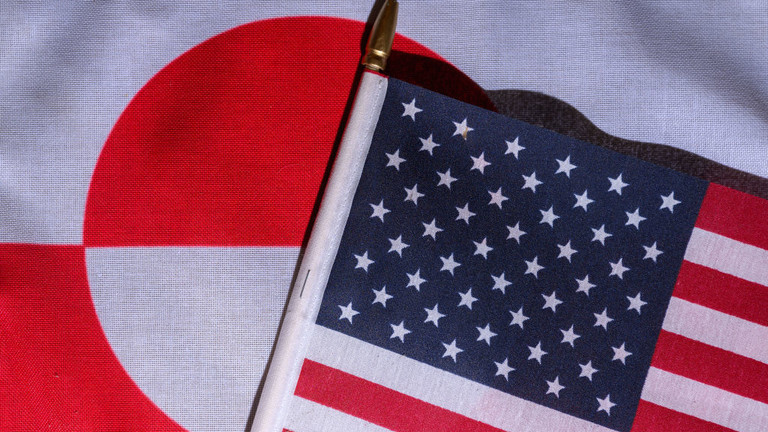This article was originally published by Mac Slavo at SHTFPlan on March 21, 2020.

Water storage is a bit tricky for most people. Few are fortunate enough to have a well on their property and a means of removing water from it without electricity. But since there are a lot of new preppers out there now, we have decided to put together a helpful guide on how to store water for a short and long-term emergency.
In a short-term emergency, even if the power goes or you’re experiencing a massive storm, bottled water can be purchased at grocery stores. But there are other ways to have it on hand in case of an emergency and you don’t want to battle anyone at the store. You could just buy a few cases of water beforehand and keep them around, but the plastic bottles will eventually begin to break down and could leech plastic into your drinking water. If you plan to store bottled water for a short-term emergency, make sure to drink it every year and replace it before the leaching process can begin.
Unlike the water itself, which has existed on Earth for 4.5 billion years, that manufactured plastic bottle only has so much time before it “goes bad.” The plastic bottles that water comes packaged in (usually polyethylene terephthalate (PET) for retail bottles and high-density polyethylene (HDPE) for water cooler jugs). The bottle will eventually fail (expire) and begin to leach plastic chemicals into the water with an effect on the overall taste. So if you happen to find a water bottle well past its printed expiration date in your home, it’s probably safe to drink, if you don’t mind the chemical bits of bottle which have broken down and are now swirling around in it, but you should also be aware of the fact that it might not be super fresh tasting anymore either. But in a life and death situation, you could drink well-expired bottled water and probably be alright. Howver, there are many other options for storing water that could help you avoid drinking the plastic. –Ready Nutrition
Food Grade Plastic Containers
These are an excellent option. Make sure you choose BPA-free containers. These will be safer and if your water is not stored correctly, it can (and will) become toxic. These containers come in a variety of sizes, but if you want long-term water storage you’ll want some pretty big ones. The benefits of a BPA-free food-grade plastic is definitely the weight and durability. These containers are difficult to break if you’re using them correctly and they are light enough to move around until you decide where you want them. Once you have water in them though, they’ll obviously be pretty heavy.
Glass Containers
I am not a fan of these, personally. (But they may work for you. Remember, prepping is about what works best for you, in your life.) They are heavy and easy to drop and break. The cost isn’t worth it to me, however, glass is going to be your best bet if you are concerned about leeching. There is no chance that a glass container will leech. But getting big enough containers to store enough water for the long term can be difficult and is often beyond the budget for some. Two 64 oz. jugs cost about $20 or, this pack of 4 glass one-gallon jugs costs $32. By comparison, the plastic jug (pictured to the left) holds 15 gallons of water and costs $79.
How Much Water Should You Store?
The general “rule of thumb” is to store one gallon of water per person per day. This may not be enough though if you want to wash clothes and dishes and bathe, but with conservation methods, you could certainly make that work. A better goal is to store two gallons per person per day and get enough for a two-week emergency when you first start. Build your storage from there. It’s always better to have it and not need it than need it and not have it, and that especially applies to your water.
Filtration
You will also want a way to filter water. If an emergency or disaster stretches out, (or you’re just beginning and you only have a couple of gallons of water stored) you are going to have to find another source of water when you diminish your storage. A lot of people like LifeStraws, but a lot of people like the Sawyer water filtration system too. This portable Berkely water filter (pictured to the right) is pricey but highly rated. Another good suggestion is to grab some water purification tablets. I keep these in my vehicle emergency kit. Tablets will eventually get used up and are a better plan for a short-term survival situation.
Survival Water Filter DIY – What to do in an Emergency!
Remember to be safe with your water! Drinking water directly from a lake or stream can make you very sick, which is why we have included several ways for you to filter water. Lakes and streams can contain viruses, bacteria, protozoans, and parasites which can cause severe illness. (Click here for more information from the CDC about contaminates in natural water sources.)
Hopefully, this will give the newer preppers out there some ideas for their water storage and filtration. If anyone has any other tips for beginners, be sure to leave them in the comments!
Why NOT To Store Rice In A Used Soda Bottle & Alternatives For Storage












For everyday use the 5 gallon blue jugs are best. They have a spigot and are easily portable. Do not get the aquatainer jugs, they are cheap and thin and crack. Also avoid white jugs or anything that lets light in. If you have the means then bury a cistern in the yard. This will keep it from light and freezing. If you decide on an above ground tank be sure to get a black or green one. In my system I have an underground tank with a submersible utility pump that pumps the water to a tank upstairs (which has an on demand 12 volt pump to supply the house). When the upstairs tank is full I shut off the pump in the underground tank and the water in the pipe goes back down in the tank (no check valve). This keeps it from freezing in winter and works excellent. Put a t in the pipe about 16 inches above the ground with an on/off valve above it. This allows you to fill the underground tank at the T (hose or pipe threaded) and you can shut the valve and pump water from the underground tank out the T without filling the house tank. Just be sure to open the valve again after your done. I have seen a few people with major freezing issues etc. and they all came to me to set them up with this system. Also you can put a hose (preferably 1″ to match 1″ thread on the T) and close the valve and it will put out a lot of water for fire suppression etc. Don’t forget to put a breather pipe in the underground tank. CHEERS!
Hey G.. You beat me to the first post.. lol Finally rained yesterday here in FL in like 1.5 months. I collected a fair amount of rain water. We should not be in our daily rain pattern. And hurricane season just began until Nov.
No more marathon showers. Now just 1 shower per year. Build a rain catch folks. Back ups to back ups. I collect rain water which is clean distilled water I use for livestock. Better than well water that is full of pollutants and heavy metals. Collect the water before it hits the ground and gets polluted.
Ya it’s dry as a popcorn fart here. It is illegal to harvest rainwater here (have no idea why). Our house is fed by local wells with NO flouride added but it is an agricultural area so pesticides etc. could be an issue but we use a good water filter for cooking and drinking. The cabin is fed from a mountain well and the water is extremely good (but we still filter it). I don’t trust rainwater, ever notice how it leaves residue on windows etc.? Anyway, hope your doing ok!
LMAO….4.5 billion years….maybe you should stop listening to the fallacy of man and listen to the word of God and see the true age of the earth and heavens…
Dr. Grady McMurtry – Why I Believe in a Young Creation
https://www.youtube.com/watch?v=nJOvg5VEOs4
I am on speaking terms with someone who ran for my city’s water dept. (First name basis.)
He couldn’t answer dirt-simple questions about where it comes from, what happens to it, or where it goes.
Rom 2:11, Ecc 10:7
They haven’t earned a literal drop sweat, yet want to meter you, everywhere you go. These power-drunk can’t account for the most basic of all living needs, on the level of a bucket and a hole in the ground, yet are allowed to preach cosmology and the unfathomable and demand participation.
Two 5 gallon buckets.
In first, drill 10 1/2 inch hole in bottom. Put a folded beach towel in the bottom. Layer 2 inches of crushed charcoal, 2 inches of playground sand, all the way to the top. Drape a beach towel over the top. Put this bucket into the 2nd bucket. Pour river water in and it filter down and come out 70% clean, filter again. Treat with plain bleach, 3 drops per liter. Let sit for 6+ hours. Drink and be safe.
Standard charcoal bags stack in shed nicely.
Playground sand does too.
Note: crush your charcoal and rinse it to remove particulates, then use to filter water.
99% of dirt and parasites are filtered. Bleach kills any remaining. The longer you let the filtered water sit, the less you will taste any bleach.
Be ready. Be prepared.
There is “charcoal” used for grilling chicken and weenies and burgers… Then there is “activated charcoal” which is used for a number of things (like filtering) that has nothing to do with grilling. They’re not interchangeable.
If you’re trying to purify dirty water, you can use alum to precipitate the solids (dirt) out into the bottom of the bucket and then pour off the clear water and add your bleach. About 1/2 tsp or so of alum will clear up a 5 gallon bucket of dirty water.
Alum is easy to find at the store and you can stock up a couple cans in your preps. It doesn’t take much.
There are complications involved with making a simple bucket.
Also, none of these discussions are 100% from scratch.